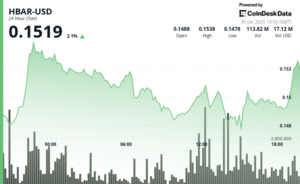Bitcoin Price Volatility Amid Geopolitical Turmoil
On June 23, Bitcoin (BTC) experienced significant price fluctuations, dipping below the $100,000 mark before quickly recapturing nearly $104,000. This volatility coincided with breaking news of an Iranian missile strike on a U.S. air base in Qatar, which thankfully resulted in no casualties. Traders processed this geopolitical event, and as of the latest data, Bitcoin was trading at approximately $103,801, marking a 4.5% increase over a 24-hour period after an intraday low of around $99,500.
Understanding Recent Price Movements
The Iranian missile attack occurred shortly after the U.S. conducted airstrikes on three Iranian nuclear sites. U.S. officials indicated that Iran had warned them through discreet channels, allowing personnel at the Al Udeid Air Base to take cover. President Donald Trump characterized the U.S. response as "very weak," suggesting that this measured strike could present an opportunity for de-escalation in tensions. The absence of injuries from the missile strike mitigated initial market anxiety, reflecting Bitcoin’s resilient nature amid such uncertainty.
Market Sentiment and Price Support
Despite the tumultuous backdrop in the Middle East, Bitcoin has demonstrated remarkable stability, often trading above the $100,000 threshold. According to a note from Bitfinex Alpha, ETF inflows into Bitcoin remain “remarkably stable,” providing a supportive foundation for the asset. The analysis underscored that the price zone between $94,000 and $95,000 is seen as crucial support, while the $105,000 to $110,000 range acts as immediate resistance. Analysts predict that Bitcoin prices will likely oscillate within these levels until there’s a significant macro catalyst or an acceleration in weekly inflows surpassing $1.5 billion.
Derivatives Data Insights
Futures and options data provide additional context for the current market dynamics. The total open interest in Bitcoin futures stands at around $52.8 billion, with options near $43.4 billion, marking a combined interest of roughly $96 billion. Although this combined interest has retreated from a peak of $114 billion after a deleveraging event, it remains elevated. Current funding rates suggest that capital is shifting towards longer-term positions rather than short-term speculation, which could contribute to a more stable price environment.
The Influence of ETF Flows
The ongoing flow of funds into Bitcoin exchange-traded funds (ETFs) plays a critical role in price dynamics. Steady or increasing allocations during U.S. trading hours, when spot-driven price discovery typically occurs, could pave the way for retests of the $110,000 cap. Conversely, a week marked by net outflows could signify a risk of price correction, potentially dragging Bitcoin back towards the mid-$90,000s, especially if geopolitical tensions escalate further.
Current Crypto Market Overview
As of June 23, Bitcoin holds the top position in market capitalization, valued at around $2.07 trillion with a trading volume of $59.35 billion over a 24-hour period. The broader cryptocurrency market is valued at approximately $3.2 trillion, with a total trading volume of $133.41 billion, indicating that Bitcoin’s dominance remains strong at 64.72%. This snapshot offers a clear view of the crypto landscape, showcasing Bitcoin’s central role in the market and underscoring the importance of monitoring both macroeconomic trends and shifts in investor sentiment.
In conclusion, Bitcoin’s recent price swings highlight its reaction to geopolitical events and broader market sentiment. With critical support and resistance levels in place, as well as the influence of ETF flows, traders and investors should remain vigilant as they navigate this dynamic landscape. Understanding these factors will be crucial for anyone looking to engage with Bitcoin and the wider cryptocurrency market in the months ahead.

















